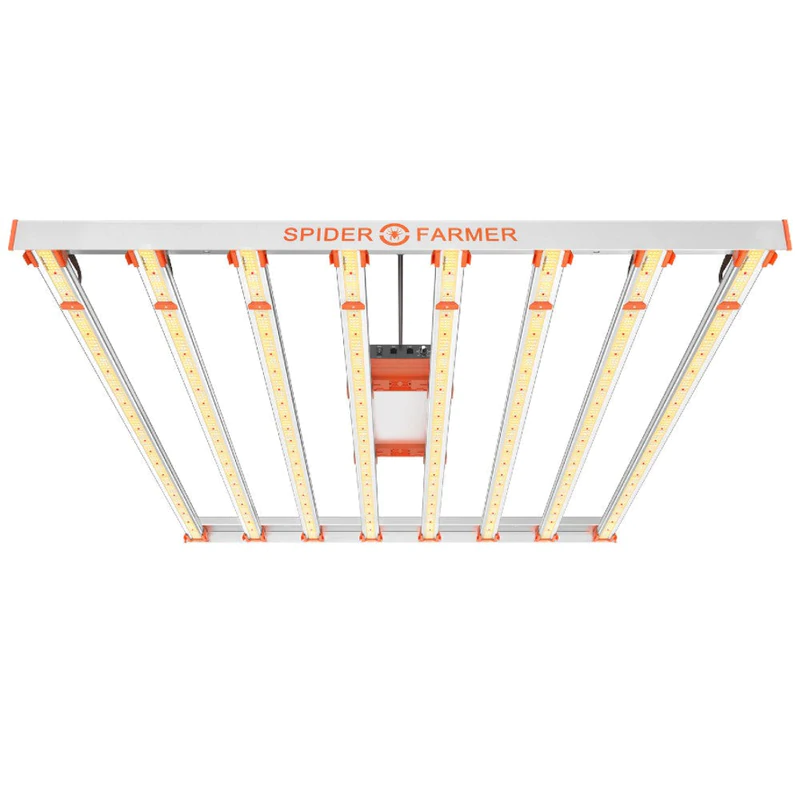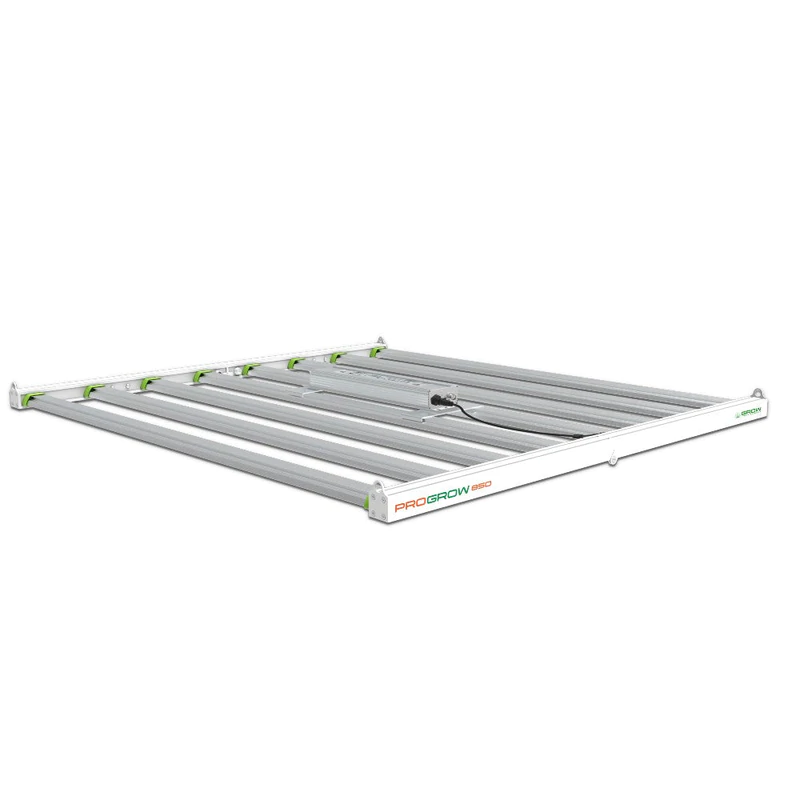LED light is a low heat and energy efficient light source that is famously used as grow lights for an indoor garden. These LED grow lights work perfectly for growing plants under a customizable spectrum of light. Being customizable is one of the most loved features of LED technology. Because LED technology is so customizable, every bulb is different, so make sure your bulbs produce the kind and color of lights necessary for your plants. LED grow lights works really best for your indoor garden or greenhouse.
ECO Farm Z8–800 Samsung LM301B LED Grow Light

Features:
The ECO Farm LED grow light is equipped with SAMSUNG LM301B chip and 8 high-efficiency aluminum rods to ensure high-efficiency PPE 2.7umol/J, better heat dissipation, and long service life. Compared with old plant lights, the average PPFD is increased by 30%, and the yield and quality are increased by 50%. 8 LED growth lights, each rod is covered with high-grade glue, waterproof and easy to clean, not easy to be filled with dust. This plant growth light also uses a special dimmer, which can precisely adjust the brightness. 0–10 levels are optional. This means that you can see clear brightness levels and record while adjusting. No need to worry about differences. At the same time, it also has an ideal full-spectrum and amazing heat dissipation: excellent full-spectrum mixing of white, blue, red, and ultraviolet light, IR LED (3500K, 660nm and IR 760nm & 396nm UV), close to natural sunlight. The spectrum applies to the entire stage of indoor planting.
Spider Farmer G860W Full Spectrum LED Grow Light

Features:
This Spider Farmer LED Grow Light features an even peripheral PPFD score for even coverage, ensuring maximum light per plant. The elongated light bar design also ensures a more even distribution of light, reaching all edges and corners. The strip grow light design and the aluminium heatsink on the back contribute to better airflow and good heat dissipation. The G860W Garden Light features a detachable driver and 6.56" long power cord to reduce ambient heat in the grow space for longer life. The LED diodes are coated with water repellent, so they are not afraid of a wet environment. Dimming daisy-chaining allows you to link up to 60 G680W Series grow lights together — dimming multiple lights simultaneously. Widely used in commercial cultivation, vertical farming, home gardens, home cultivation, CO2 systems and hydroponics.
Grow Light Science PROGROW 850 850W LED Grow Light

Features:
Grow Light Science LED grow light is a full cycle overhead lighting solution for commercial or residential plants cultivation. The 850’s form factor allows for expandability and multiple grow room and grow tent configurations where photosynthesis and yield maximization are the goals. PROGROW 850 provides high PPFD levels and can be used with CO2 supplements. Top light output (PPF), spectral distribution and efficacy will deliver amazing results with little impact on your wallet. PROGROW 850 will deliver PPFD levels of over 1,400 umols/m2/s, either individually or in arrays of multiple cells. We recommend that all growers conduct research and trials within their growing space to design the best combination of inputs.
Factors To Consider When Buying Grow Lights For Indoor Growing
Grow lights are a crucial component of growing plants indoors. There are different types of lights for various purposes and capacities. Buying the wrong type of light can hurt the growth of your plants. You have to make the proper calculations first to get the right kind of lighting.
These are the things to keep in mind when looking for grow lights for your indoor garden.
Color Spectrum
Your plants will go through different growth stages, and each stage will require different types of lighting. For example, plants at their vegetative stage will need a blue light spectrum, while those at the flowering stage will need red spectrum lights.
Size of Grow Area and Plants
Lights should be properly distributed in your grow area so that your plants will get equal lighting. This is why the size of your grow area is crucial in knowing the number of grow lights you will need.
Along with this, you have to arrange your grow room so that each plant will get equal amounts of light and water and ventilation. You have to make sure that you maximize your space and light so they won’t go to waste.
Height
The height of your lights will affect the growth of your plants. If you keep your lights too close to your plants, you risk getting their leaves burned. If the lights are too high for the plants, your plants may get affected by their THC levels.
This is why part of your responsibilities as a grower is to shift your plants and prevent their leaves from burning regularly.
Light Schedule
Your plants will also need a certain number of hours in the dark. Most growers maintain their plants in complete darkness for around 4 to 6 hours every day. A slight mistake in your lighting schedule can affect the quality of your plants, so you have to be careful when adjusting your plants’ daily consumption of lights.
Heat
Grow lights, such as MH and HID, give off heat. This is important to note because extra heat can affect the texture and quality of your plants. You should adjust accordingly if you have humidity and temperature separately.
Conclusion
We think these are the best products and hope you find them useful. There are many products that are easiest to work with today. However, when you decide to buy a product, it is not always easy to choose one that meets all your requirements. I hope this article is helpful to you.